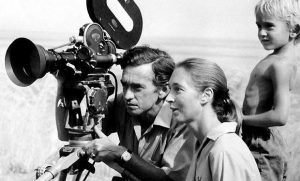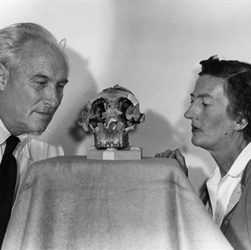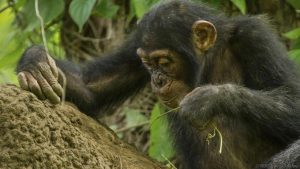Sixty years ago the very idea of that Chimpanzees, Pan troglodytes, living in different areas of Africa could have different cultures seemed simply ridiculous. After all in order to even have a culture requires either the production of manufactured items that can differ from one group to another or complex social interactions, like a language, that again can show differences between groups. Chimpanzees, so the thinking went, neither made things nor did their various hoots and growls amount to anything more than simple alarums or warnings.
We’ve learned a lot since then and it all began when Jane Goodall was the first to observe a chimpanzee using a twig to get termites out of a nest in order to eat them. (See my posts of 11Nov17 and 21Mar18). This was the first ever observation of tool use by Chimpanzees but was quickly followed by numerous other observations of them using a range of tools. However, because Goodall concentrated all of her observations on a single-family group of chimpanzees she missed the fact that chimpanzees do things differently in different parts of Africa, that P troglodytes possessed culture.
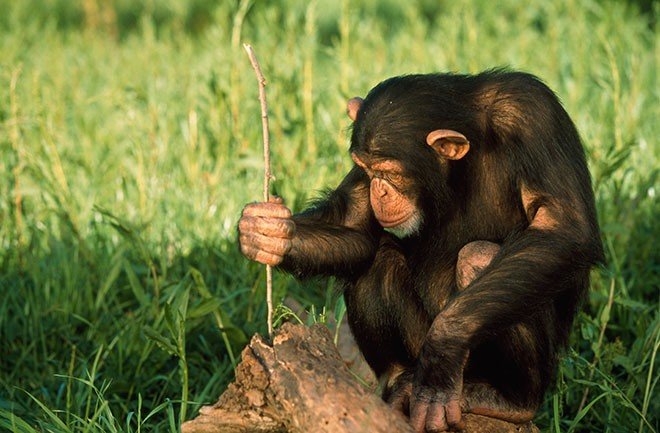
For example only the chimpanzees of West Africa use stone and wood as hammers in order to crack nuts while in central Africa chimps have been observed to use clubs to open up beehives. Other cultural differences include different styles of nest construction, chimpanzees make a new bed of leaves every night, along with behaviors such as stone piling and algae scooping.
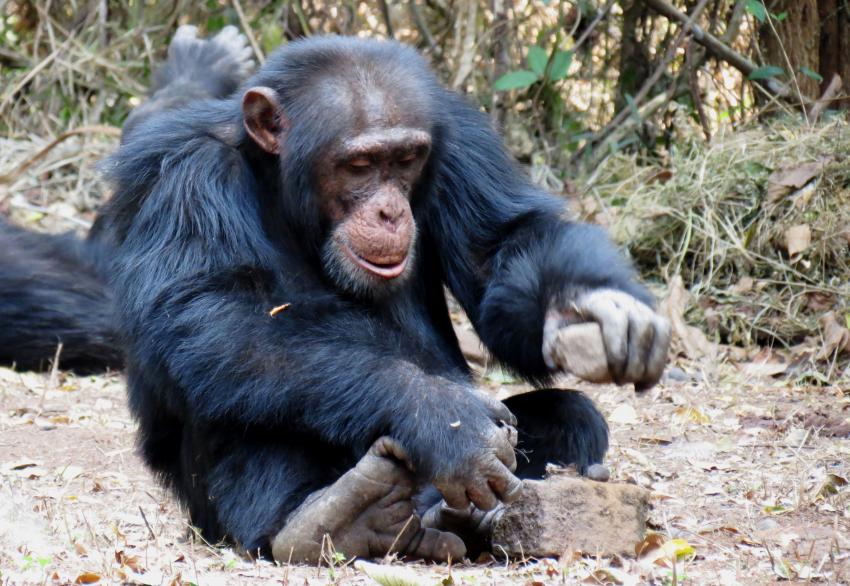
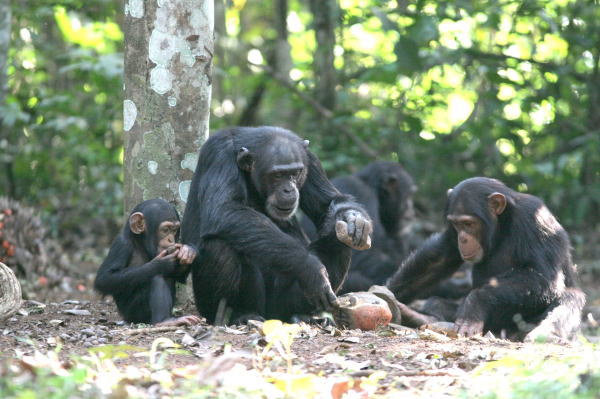
Now researchers from the Max Planck Institute for Evolutionary Anthropology (MPI-EVA) and the University of Warsaw have discovered a new ‘behavioral realm’, a new cultural unit located in the Bili-Uĕrĕ region of northern Democratic Republic of Congo. The area encompassed in this new ‘behavioral realm’ is estimated at some 50,000 square kilometers but could extend further. The announcement, in a paper published in the journal Folia Primatologica is the result of twelve years of study in the field; some discoveries take a long time and require a careful examination of the evidence.
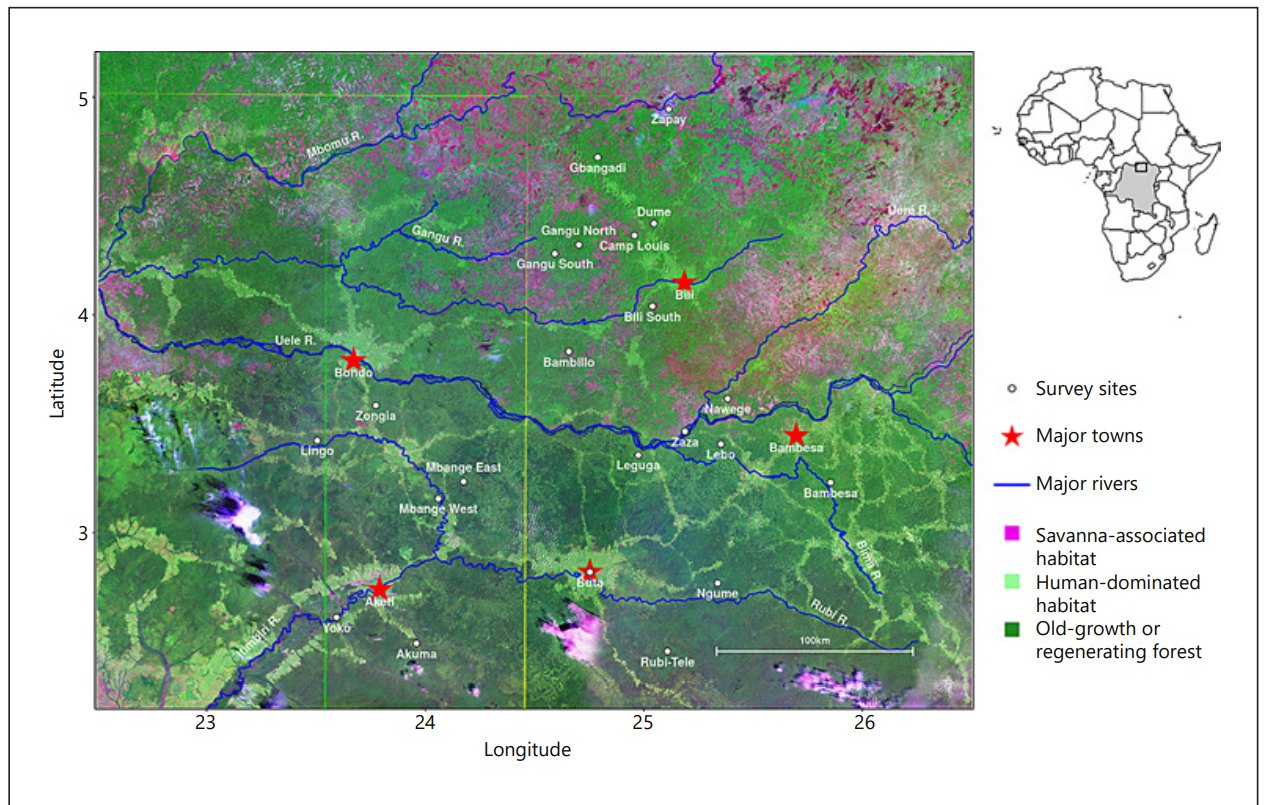
Some of the differences are striking, such as whereas most chimp populations use twigs to ‘fish’ for the common termite Macrotermes muelleri, the Bili-Uĕrĕ chimps prefer to use stones and clubs to pound open the nests of the species Thoracotermes macrothorax. In fact the Bili-Uĕrĕ chimps seem to prefer pounding things in general, such as using stones on snail shells and even tortoises, behavior never before observed in chimpanzees. The scientists hope that by learning more about how chimpanzees develop their different cultures they may succeed in better understanding how it was that the first human cultures came into being.
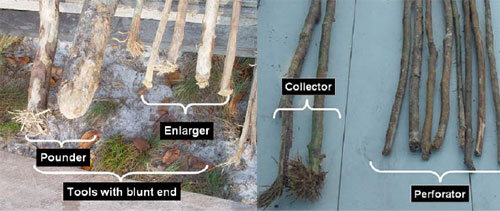
As exciting as this new discovery is there’s a danger here that has nothing whatsoever to do with the study of anthropology. The Democratic Republic of the Congo is currently mired in a bitter civil war that has taken the lives of tens of thousands of people. Yet even while the bloodshed continues there is a destructive exploitation of the jungle underway that threatens to exterminate the chimpanzees in Bili-Uĕrĕ even as their distinctive culture is being studied.
As co-author and director of the Department of Primatology at MPI-EVA Christophe Boesch put it. “It is great to have found these fascinating behavioral traits in this population. We simply hope that the many threats they face won’t wipe out these chimpanzees just as we are learning more about their uniqueness.”
Post Script: I’d like to update a story from just last week about the test mission of the Space X crew Dragon capsule. After five days attached to the International Space Station (ISS) the Dragon capsule undocked from the ISS and reentered Earth’s atmosphere, splashing down in the Atlantic Ocean about 450 km from the Cape Canaveral launch pad from which it had taken off six days earlier. While the reentry and splashdown appeared to go flawlessly NASA and Space X will still review all of the data over the next few months. Currently the plan is for the first actual manned mission to the ISS for the Dragon to take place in July. I’ll keep you up to date!


